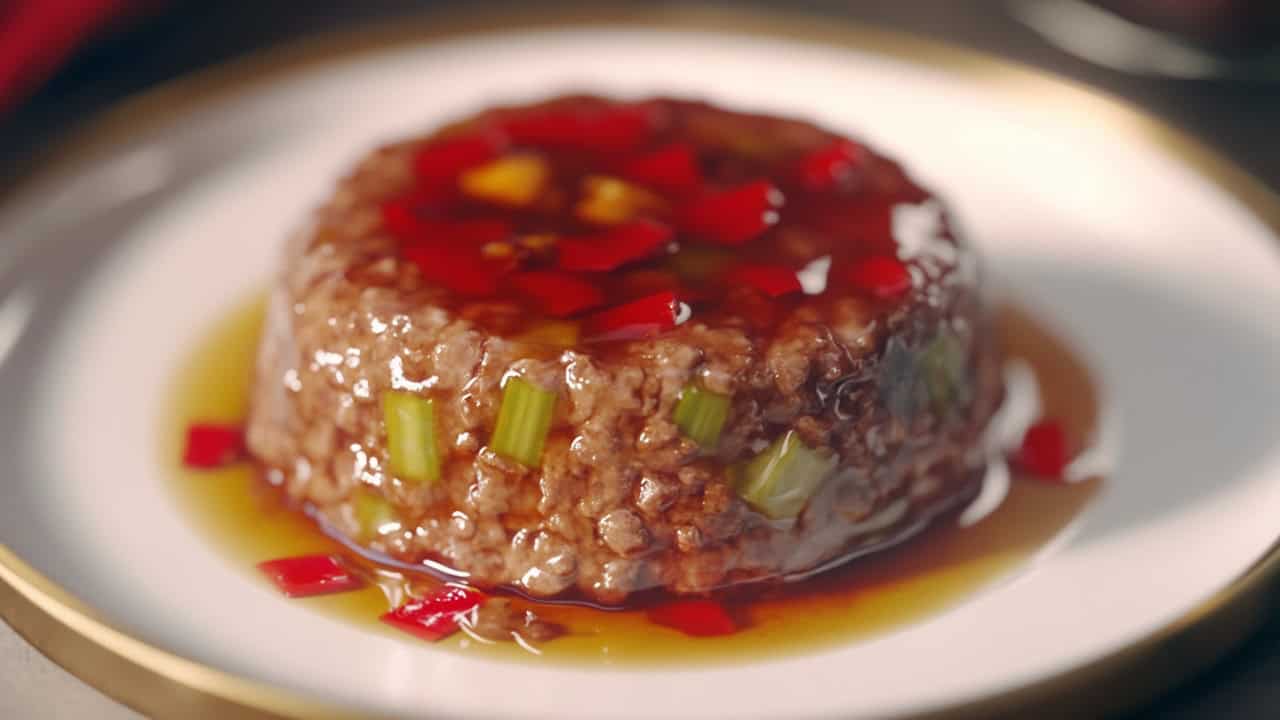Jellied meatloaf is a dish that feels like a relic from another era. Once a staple in home kitchens, it was part of a wave of old recipes that leaned heavily on gelatin as a key ingredient.
While the idea of suspending ground beef in a shimmering mold might sound unusual today, it was once seen as the height of innovation.
The Fascination with Gelatin-Based Meals

Unlike traditional meatloaf, which is served hot and fresh from the oven, this version is cooked, mixed with broth and seasonings, and set in a mold overnight. Jellied meatloaf is a cold, sliceable dish that could be served as a main course or appetizer.
For decades, recipes like this were included in cookbooks and advertised as elegant additions to dinner tables. However, changing tastes and food trends led to a decline in gelatin-based main dishes.
Fresh ingredients and simpler presentations became more desirable, and jellied meatloaf, like many other molded dishes, started to fade into culinary history.
A Practical Approach to Cooking
One reason jellied meatloaf remained popular for so long was its practicality. The gelatin helped preserve the meat, allowing it to stay fresh longer.
In the 1930s and 1940s, when food waste needed to be minimized, recipes like this were a smart way to stretch ingredients.
For busy households, the ability to prepare a meal in advance and serve it cold made it an ideal choice. Jellied meatloaf could be made a day ahead, chilled overnight, and sliced for a quick and easy dinner.
This convenience made it a staple in homes throughout the mid-century, even as cooking styles evolved.
Another advantage was its presentation. The molded shape and the way ingredients were suspended in gelatin made it visually appealing.
It was a dish that could be proudly served at dinner parties, offering an unusual yet elegant addition to a meal.
The Evolution of Meatloaf Through the Decades
Meatloaf itself has undergone many transformations over the years. Traditional baked meatloaf remains a beloved comfort food, often served with mashed potatoes and vegetables.
Meatloaf variations became more adventurous, incorporating different meats, spices, and sauces.
Jellied meatloaf, however, was always in a category of its own. While it never achieved the same lasting popularity as its baked counterpart, it remains a fascinating example of how food trends shift over time.
Looking back, it’s easy to see why this dish stood out—both for its creativity and its unusual combination of textures.
Bringing Back a Forgotten Classic

For those interested in vintage recipes, jellied meatloaf offers a fun and nostalgic way to explore culinary history. While it may not be as common today, it can still be a conversation starter at gatherings or a unique dish for themed dinner parties.
Making jellied meatloaf is a way to connect with the past, revisiting a time when home cooks experimented with presentation and preservation. Whether enjoyed for its historical significance or as a quirky throwback, it remains a testament to the ever-evolving world of food.
While it may not be making a major comeback anytime soon, it will always have a place in the annals of culinary history.

Jellied Meatloaf – An Old Recipe Revival
Ingredients
- 1 lb ground beef
- 1 tbsp unflavored gelatin
- 1 cup water
- 1 medium onion peeled and minced
- 1 medium stalk of celery finely chopped
- 1 tsp salt
- 1 tsp black pepper
- 2 cups beef stock
- ½ cup chopped pimiento peppers
Instructions
- Heat a skillet over medium-high heat and brown the ground beef for about 8 to 10 minutes, breaking it apart as it cooks. Once fully cooked, drain any excess grease and set the meat aside.
- In a large bowl, dissolve the gelatin in water and let it sit while preparing the stock.
- In a separate pot over high heat, sauté the minced onion, celery, salt, and pepper for a minute before adding the beef stock. Bring to a boil and let it cook for 3 minutes.
- Strain the hot stock into the gelatin mixture, stirring thoroughly to ensure even distribution.
- Allow the mixture to cool slightly and begin thickening but not fully set (this may take around 40 minutes to an hour). Once it reaches the right consistency, fold in the cooked ground beef and pimiento peppers.
- Pour the mixture into ramekins, individual molds, or a loaf pan. Refrigerate overnight until fully set.
- To unmold, briefly dip the container in warm water (taking care not to let water seep in) for 10 to 20 seconds, then turn it onto a serving plate. If needed, use a thin knife to loosen the sides. Serve chilled, traditionally atop a bed of lettuce.
Notes
- For a more traditional presentation, consider garnishing with parsley or serving with a side of horseradish sauce.
- If using a large mold, slicing into thin servings makes for an interesting texture contrast.
Nancy has been a plant person from an early age. That interest blossomed into a bachelor’s in biology from Elmira College and a master’s degree in horticulture and communications from the University of Kentucky. Nancy worked in plant taxonomy at the University of Florida and the L. H. Bailey Hortorium at Cornell University, and wrote and edited gardening books at Rodale Press in Emmaus, PA. Her interests are plant identification, gardening, hiking, and reading.

